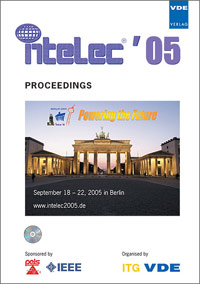System Stability of Full-Regulated Bus Converter in Distributed Power System
Konferenz: Intelec '05 - Telecommunications Conference - 27th International Telecommunication Energy Conference
18.09.2005 - 22.09.2005 in Berlin, Germany
Tagungsband: Intelec '05 - Telecommunications Conference
Seiten: 6Sprache: EnglischTyp: PDF
Persönliche VDE-Mitglieder erhalten auf diesen Artikel 10% Rabatt
Autoren:
Abe, Seiya; Nakagawa, Hiroshi; Ninomiya, Tamotsu (Dept. of EESE Kyushu University 6-10-1, Hakozaki, Higashi-ku, Fukuoka, 812-8581, Japan)
Hirokawa, Masahiko (TDK Corporation 2-15-7, Higashi-Ohwada, Ichikawa-shi, Chiba, 272-8558, Japan)
Zaitsu, Toshiyuki (TDK Innoveta Inc. 3320 Matrix Drive, Suite 100 Richardson, TX 75082, USA)
Inhalt:
The bus architecture, consisting of bus converter and POLs (Point Of Load), has become very popular since POL can respond to some demands of multi power supply voltage, low driving voltage and series sequence/tracking of LSI with more flexibility than isolated DC-DC solution. However, the customer suffers the system instability issue caused by impedance overlap between the bus converter and POL. Bus converter has three types i) Un-regulated, ii) Semi-regulated, iii) Full-regulated, and each type has different output characteristic. This makes matter more complex to understand and difficult to resolve the instability phenomena. This paper investigates the comparison of the stability of three types of bus converter and POL using steady state average model. As a result, it has been found that "un-regulated bus converter+POL" is the most stable, "Full-regulated bus converter+POL" is next due to dumping of the resonant peak of impedance by the loop feedback, "Semiregulated bus converter+POL" is the most un-stable, therefore a large capacitor at the intermediate bus is needed.


